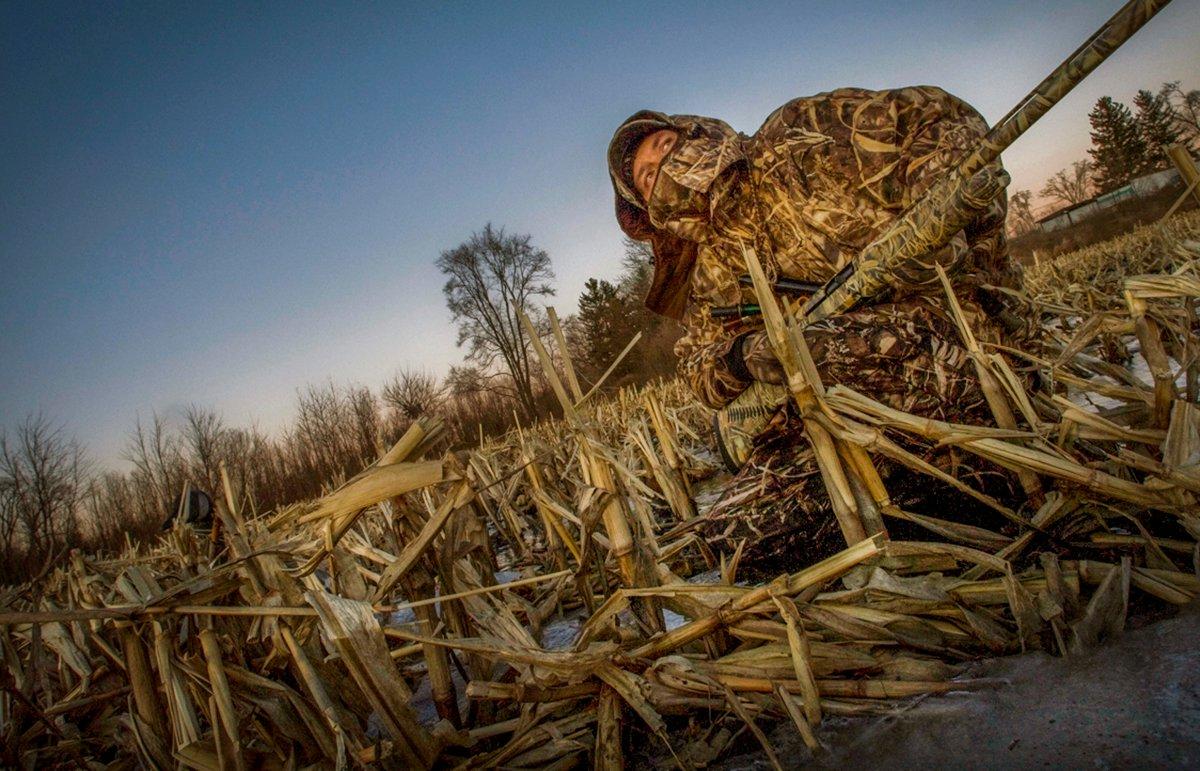Dry-Land Hunts Aren't Always Dry; Score Big During Wet Conditions

A friend read it, scrunched his nose and narrowed his eyes.
What? I asked, knowing he was formulating a critique.
Well, it's good, he said. But what if the field has water in it?
Forehead slap. He was right, of course. Fields and water aren't mutually exclusive. In fact, temporary standing water in fields and pastures can create great duck and goose hunting opportunities. Let's discuss the wet side of dry land.
Every duck hunter knows that geese and puddle ducks love feeding on grass or waste grain in harvested fields. Heavy precipitation sometimes floods portions of fields, grasslands or cattle pastures, creating a perfect miniature habitat for birds: water in or near abundant food. Ducks and geese seem to find these spots immediately and will use them until the water recedes or the chow is gone. And why not? They can hit the feed bag and then loaf all day in relative safety. Large flooded areas that resemble small lakes attract lots of birds, but barely perceptible sheet water or even small puddles in plowed rows also appeal to ducks and geese.
Hunting these spots isn't much different than pursuing birds in dry fields, but remember some special considerations. First, finding these honey holes can be more difficult than you think. It's easy to spot birds in a stubble-field puddle off a paved road, but it can be tricky to find concentrations of ducks in a wet pasture or grassland. Always look for singles or flocks that land or seemingly disappear in previously dry areas. They might be congregating at small, hard-to-see flooded spots.
Also, get ready to work. No landowner will let you drive on a saturated field or pasture, so you'll have to lug decoys and other gear a long way to reach the hotspot. Further, flooded areas — especially harvested fields — can be a muddy mess. If you can stand or sit in nearby cover, such as a fence row or standing corn, do it. If you have to lie down, you'll need waterproof clothing and probably field blinds to stay relatively dry. Even then, your boots will likely be coated with thick, gumbo-like mud. In addition, make sure your clothing or blind matches the field. Even a well-grassed camo blind can stick out like a neon sign against the dark black muck of a South Dakota bean field.
Set your decoys somewhat differently in flooded field conditions. If the area of standing water is small, place full-body honker decoys around the water's edge and even in the edge of the water. Toss a few floaters in the water, too. If a flooded area seems to attract more ducks than geese, consider using more floating duck decoys than honkers, but still put some goose full-bodies out for confidence.
My first experience with flooded fields occurred 30 years ago, when I was in college. A buddy said ducks were swarming sheet water from heavy rains at a farmer friend's pasture, and we could hunt there. The next few days were incredible, as every type of puddle duck and a few geese zipped past our meager decoy spread. We couldn't hit anything, but that didn't stop us from trying. And on our last day, my buddy shot his limit of greenheads, making the effort worthwhile.
Years later, wet snow and heavy rains soaked the northern South Dakota landscape, and a friend noticed several birds disappear into what seemed to be a nondescript pasture. A quick walk revealed a 2-acre area of fresh sheet water filled with ducks. We set layout blinds nearby the next morning and filled our straps with 18 wigeon and gadwall.
Go ahead, hunt dry, comfortable fields this season. They're great. Just be ready for potentially better action when things get wet.
Click here for more Realtree waterfowl hunting content. And check us out on Facebook.






